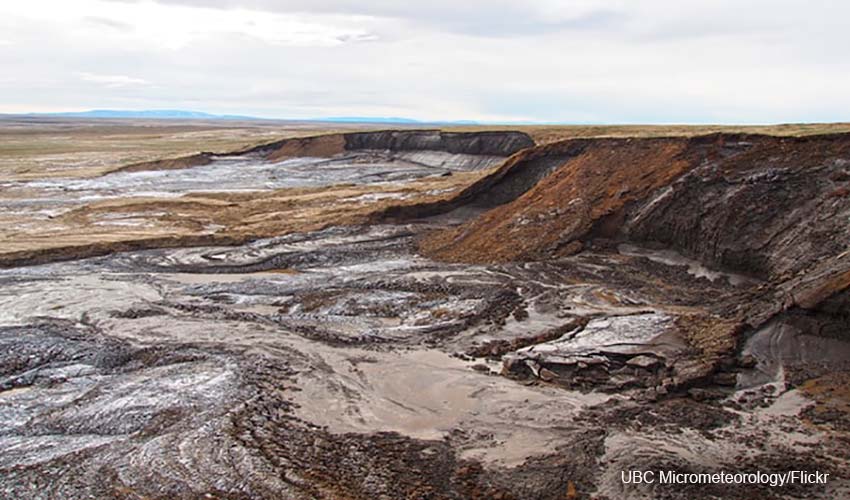FAQs about Permafrost

4. What dangers does permafrost pose?
Violent thawing of permafrost due to increased global warming could be catastrophic. No one knows how much CO2 would be added to the atmosphere if this happened. For now, this kind of emission is a slow process, but it has already started. It is also impossible to predict the impact it would have on the greenhouse effect and climate change. What is known is that it would jeopardize the main objective of the Paris Agreement, to allow a maximum of 2ºC for world temperature by the end of the century.
Thomas Gasser, researcher of the Program of Administration and Ecosystem Services of the International Institute for Analysis of Applied Systems, based in Austria, in this sense indicates:
“The release of permafrost carbon from previously frozen organic matter is caused by global warming and will certainly decrease the CO2 budget we can emit by staying below a certain level of global warming. It is also an irreversible process in the course of a few centuries and can therefore be considered a ‘tipping’ element of the Earth’s carbon-climate system that tests the linear approximation of the emissions budget framework. ”
At SGK-PLANET we have asked ourselves, “Is permafrost a climate time bomb due to global warming?” And we have tried to answer in our set of FAQs about climate change.
FAQS about Permafrost
1. What is permafrost and where is it located?
2. Are there frozen soils without ice?
3. What is the function of permafrost?
4. What dangers does permafrost pose?
5. Is Siberian permafrost thawing faster?
6. Is Russia the most vulnerable country due to permafrost?
7. What are the bacteria related to permafrost?
8. Can bacteria hibernating for millions of years in permafrost be activated?
9. Is there permafrost in the southern hemisphere?
10. What is the difference between the tundra and the taiga?
Other secctions of Permafrost
Article
Magazine
You can also see it in…
Infographics

Photo Gallery.

Video Gallery

